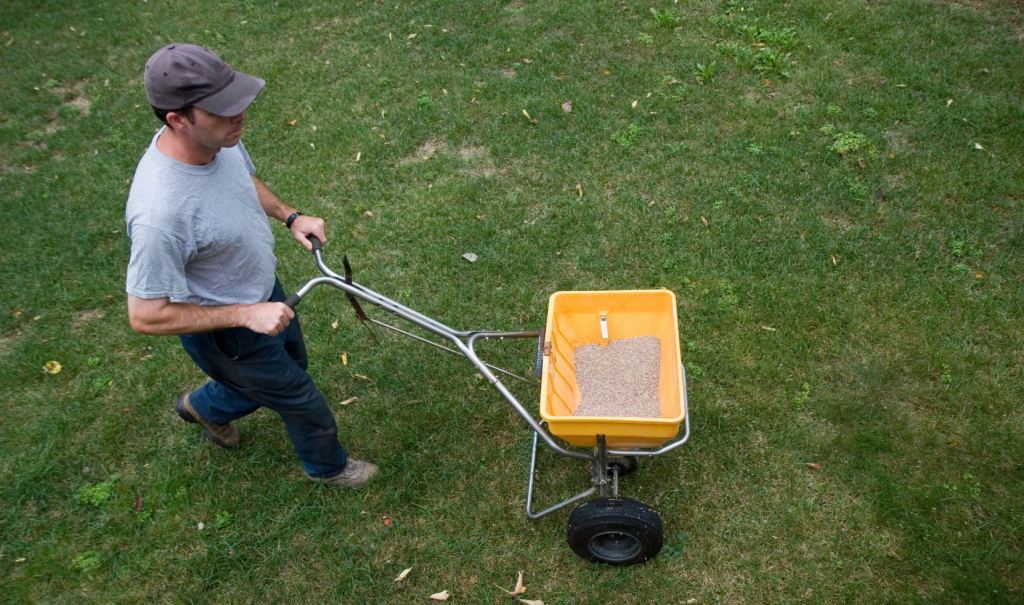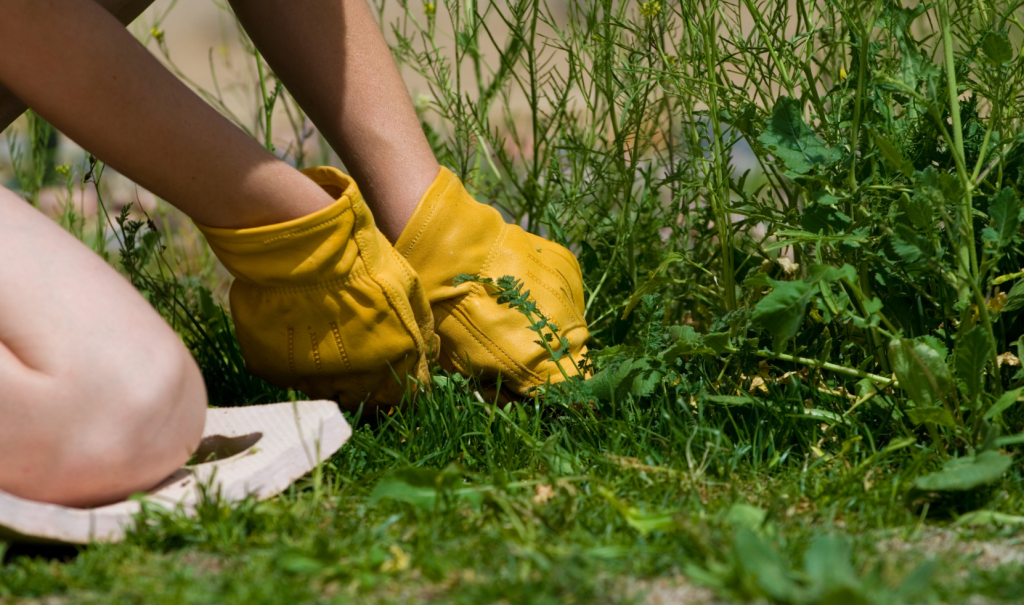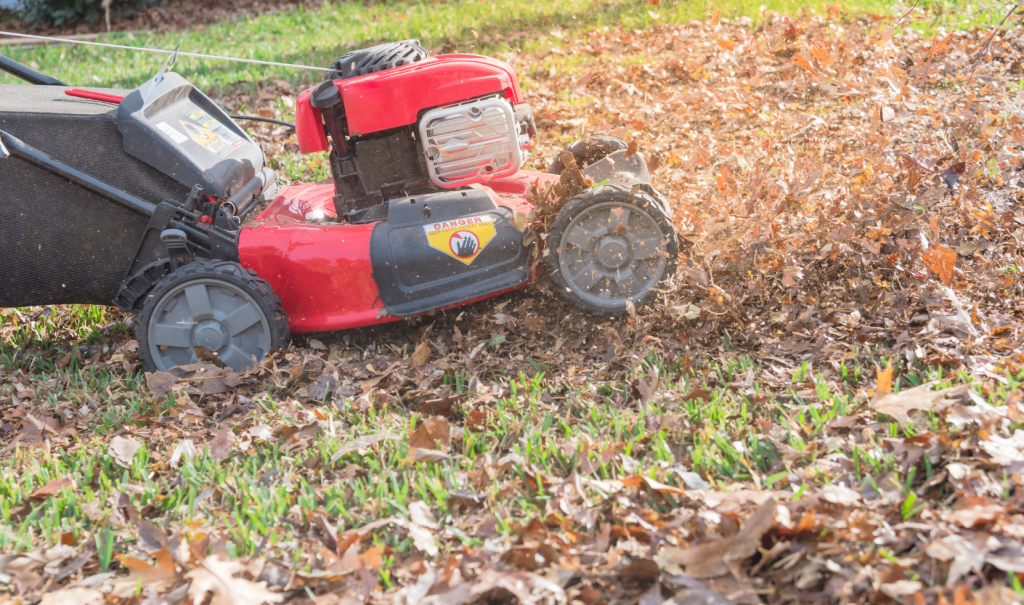As summer fades and the days grow shorter, autumn presents the perfect opportunity to prepare your lawn for the winter months ahead. Proper lawn care in autumn ensures that your grass remains healthy and lush when spring returns. This comprehensive guide covers everything you need to know about autumn lawn care, including when to scarify your lawn, how to aerate and top dress, the importance of autumn lawn feed, and techniques for repairing damage. By following these tips, you can ensure your lawn thrives through the colder months and comes back strong in the spring.
Why Lawn Care in Autumn is Important
By the end of summer, lawns often bear the brunt of hot, dry weather and heavy foot traffic. The stress can leave your lawn looking worn and patchy. Autumn provides a unique opportunity to rejuvenate your grass, as the mild temperatures and increased moisture create ideal conditions for growth. Taking proactive steps in the fall can result in a healthier, more vibrant lawn come spring.
Benefits of Autumn Lawn Care
- Promotes Recovery: The cooler temperatures of autumn help grass recover from summer stressors such as heat and drought.
- Encourages Root Growth: While above-ground growth slows down, root systems continue to develop, making it crucial to care for your lawn during this season.
- Improves Soil Quality: Tasks like scarification and aeration enhance soil structure, drainage, and nutrient absorption.
- Weed Control: Effective weed management during autumn can reduce future weed populations in the spring.
- Disease Prevention: Healthy lawns are less susceptible to fungal diseases that thrive in damp autumn conditions.
Key Tasks for Lawn Care in Autumn
1. Scarification
Scarification is the process of removing thatch—a layer of dead grass clippings, moss, and organic debris that can suffocate your lawn. Removing thatch not only helps improve airflow but also allows water and nutrients to penetrate more easily into the soil.
When to Scarify Your Lawn in the UK
The best time to scarify a lawn in the UK is during late September to early October when temperatures are mild but grass growth is still active. Scarifying too early or too late may hinder recovery before winter sets in.
How to Scarify a Lawn in the UK
- Gather Equipment: Use a spring-tined rake or a powered scarifier.
- Rake Vigorously: Work your way across the lawn by raking vigorously in one direction first and then at a right angle to ensure maximum thatch removal.
- Collect Debris: After scarifying, collect all thatch and debris and add it to your compost heap.
- Post-SCARIFICATION: Your lawn may look patchy after scarification; this is normal as it will soon recover and flourish.
- Frequency: Ideally, you should scarify your lawn every one to two years depending on its health and usage levels.
2. Aerating Your Lawn
Aeration is another vital step in autumn lawn care that enhances air circulation, water infiltration, and nutrient absorption. Aerating involves creating holes in the soil which allow air to reach grass roots.
Aeration Techniques
- Spike Aeration: Use a garden fork or aerator tool to create holes approximately 10–15 cm apart across the lawn.
- Hollow-Tine Aeration: For more significant benefits, especially on compacted or clay soils, consider using a hollow-tined aerator that extracts plugs of soil for even better aeration.
Best Time to Aerate Your Lawn in the UK
Autumn is an excellent time for aeration—typically around mid-September through October—when grasses are still growing actively.
3. Top Dressing
Top dressing is typically performed after aerating and involves applying a mix of soil, sand, and organic matter over your lawn’s surface.
Best Time to Top Dress Your Lawn in the UK
Like aeration, top dressing is best done during autumn when temperatures are cooler but grass growth is still active.
How to Top Dress Your Lawn
- Prepare Your Mix: Create a top dressing mix using three parts sandy loam, six parts sharp sand, and one part peat-free multi-purpose compost.
- Application Rate: Apply at a rate of 2–3 kg per square meter (4–7 lbs per 10 sq ft).
- Distributing Mix: Use a shovel or rake to evenly distribute this mix across the surface of your lawn, working it into any aeration holes.
- Improved Texture: This practice improves soil texture, drainage, and root development by enriching existing soil with organic matter.

4. Fertilizing Your Lawn
Fertilization during autumn supports root development rather than leafy growth—crucial for maintaining healthy grass through winter.
When to Apply Autumn Lawn Feed
The best time to apply autumn lawn feed is between mid-September and mid-October when temperatures cool down but there’s still ample growth potential.
What is the Best Autumn Lawn Feed?
Look for fertilizers formulated specifically for autumn application; these typically contain higher potassium levels which support root development while minimizing top growth.
How Much Fertilizer Should You Use?
- Follow package instructions closely—most recommend around one handful per square meter.
- Apply just before rain is expected or water it in if no rain occurs within a day or two post-application.
5. Repairing Damage
Autumn offers an excellent opportunity to address any damage caused by summer heat, pests, or foot traffic:
Repairing Techniques:
- Re-seeding: For patchy areas or bare spots left over from summer stress or pest damage, use high-quality grass seed suited for your local climate.
- Turfing: For larger damaged sections that require immediate attention—lay new turf over affected areas for instant coverage.
- Leveling Dips/Bumps: Fix any uneven spots by filling them with topsoil or leveling compound for an aesthetically pleasing surface.

6. Weeding
Weed control remains critical during autumn as it prepares your lawn for next spring:
Autumn Weed Control Methods
- Autumn Weed & Feed Products: Apply combined feed-and-weed products designed specifically for use in autumn.
- Hand Weeding: Regularly inspect your lawn for weeds; remove them manually before they set seed to minimize future populations.
Common Problems Addressed During Autumn Lawn Care
Taking care of common issues now helps prevent complications later:
- Moss Control: Moss thrives under damp conditions; regular scarification helps manage its growth effectively.
- Pest Management: If leatherjackets or chafer grubs appear problematic—consider applying biological controls early in autumn as preventative measures.
- Fungal Diseases: Keep an eye out for fungal diseases such as red thread or fusarium patch; proper maintenance reduces susceptibility—address issues promptly if they arise.
Conclusion
In conclusion, effective lawn care in autumn is crucial for maintaining a healthy and vibrant lawn through the winter months and into the following spring. By taking proactive steps such as scarification, aeration, top dressing, fertilization, damage repair, and weed control, you can prepare your grass to withstand the colder weather while setting the stage for lush growth when temperatures rise again.
Each of these practices serves a specific purpose:
- Scarification helps remove thatch, allowing for better air and moisture penetration.
- Aeration ensures that roots receive adequate oxygen and nutrients.
- Top dressing improves soil structure, fostering healthier grass growth.
- Fertilization provides essential nutrients to strengthen roots during winter.
- Repairing damaged areas revitalizes your lawn and keeps it looking pristine.
- Weed management minimizes competition for resources, ensuring your grass thrives.
By paying attention to these essential tasks during autumn, you not only enhance the immediate appearance of your lawn but also promote long-term health and resilience against pests, diseases, and environmental stressors. Embracing a comprehensive approach to lawn care in autumn ultimately leads to a flourishing landscape that will serve as an inviting outdoor space for you and your family to enjoy for years to come.
Investing time and effort into your lawn during this critical season will pay dividends in the form of vibrant greenery, improved soil health, and a beautiful yard ready to welcome the joys of spring. By prioritizing these best practices in autumn lawn care, you ensure that your outdoor space remains a source of pride and enjoyment throughout the changing seasons.

